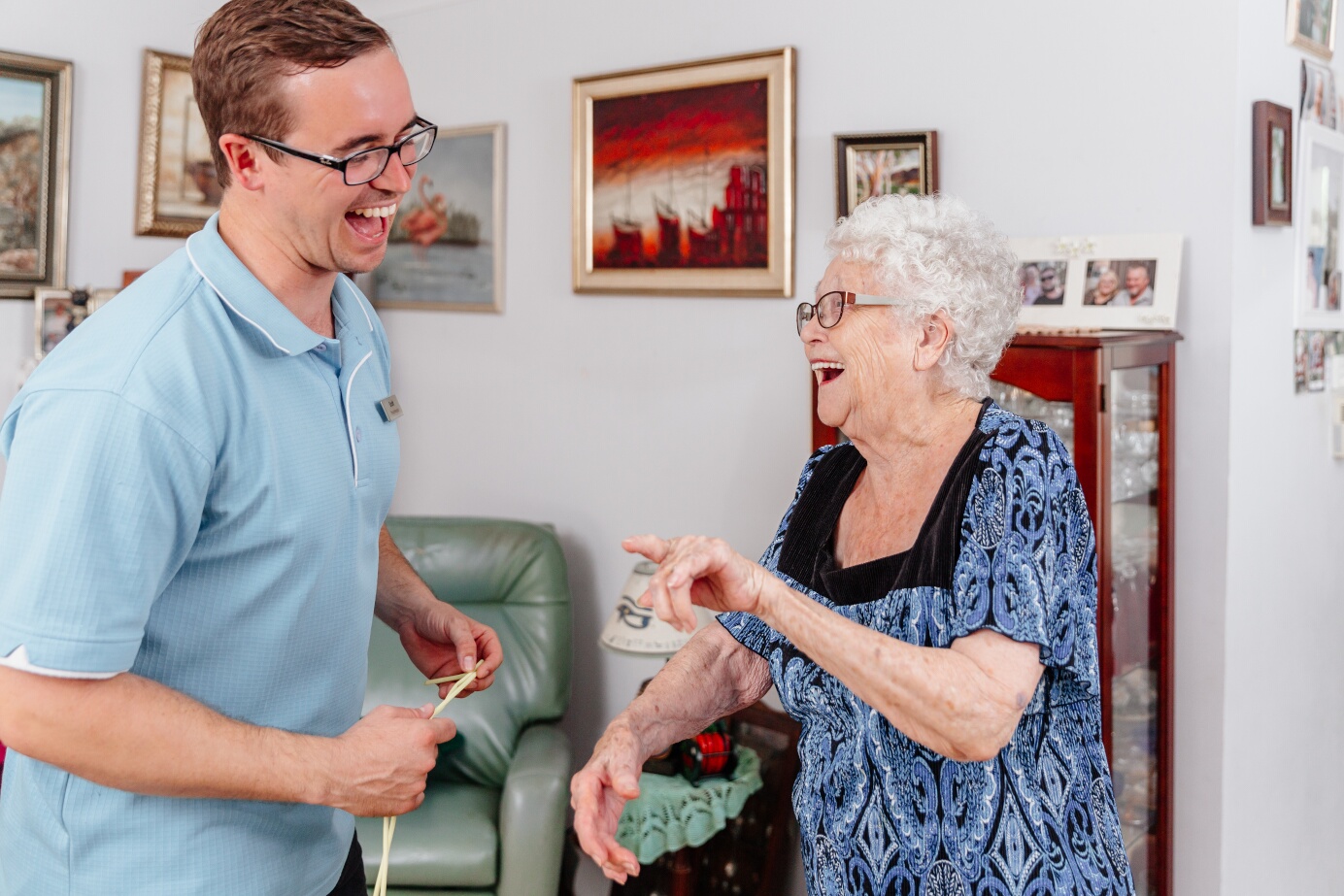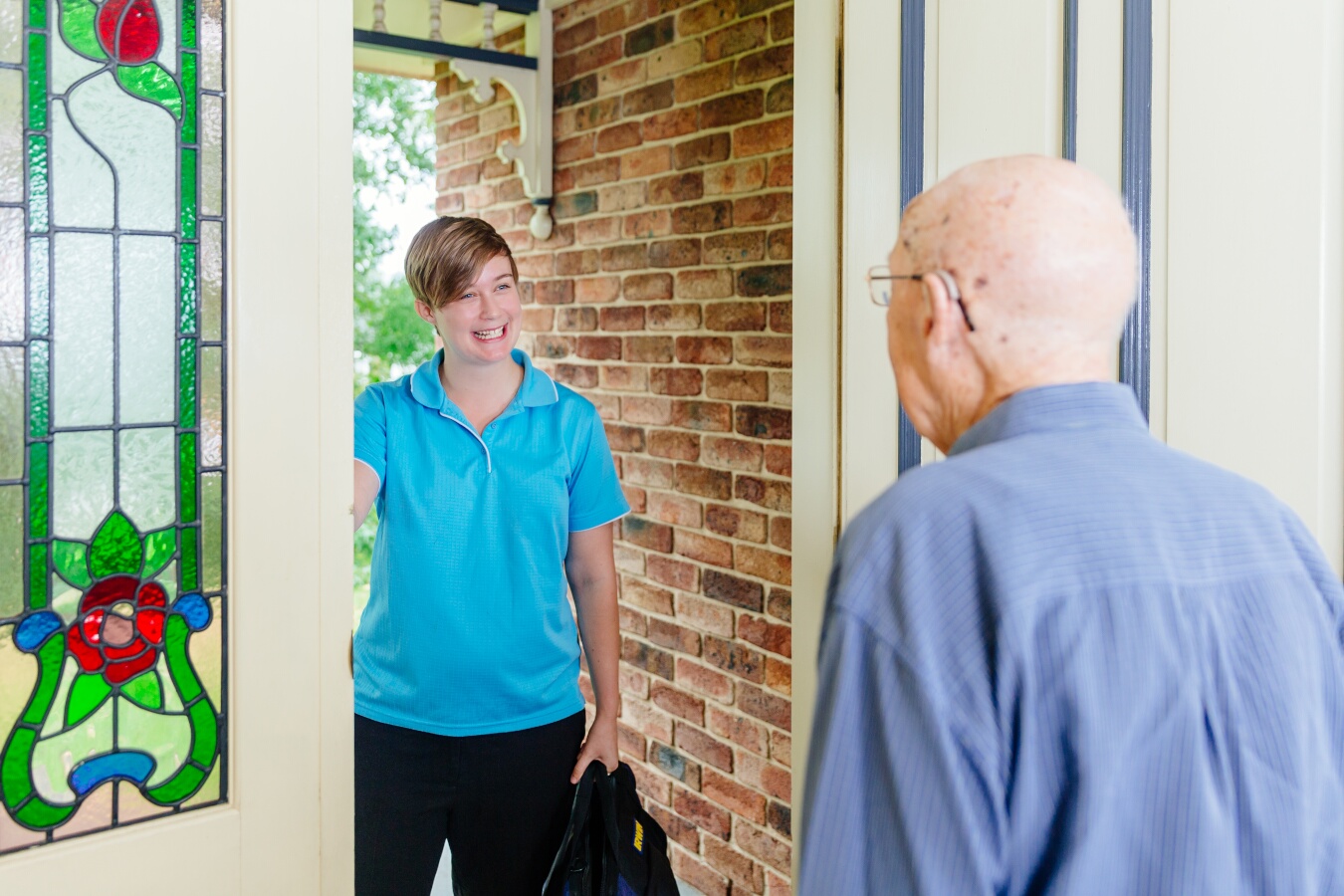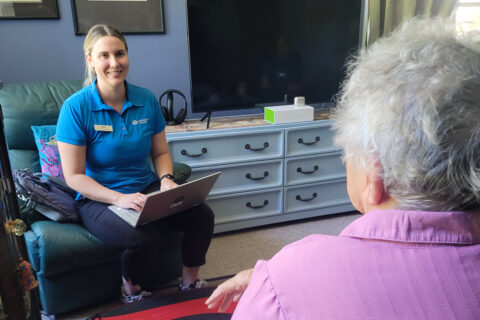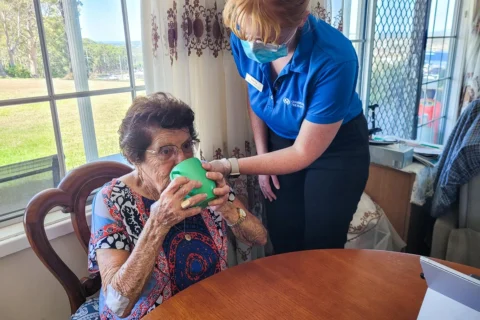Exercises for seniors
Why exercise?
As we get older, a number of life events can interfere with our regular physical activity routines. These can include unexpected medical episodes, hospital admissions, varying levels of disability and a changing social life.
Most individuals in Australia have a desire to remain in their own home for a long period of time, however a decline in physical activity can lead to a strength-related decline in balance, mobility and overall physical function. Alongside medical interventions and diet, the evidence surrounding exercise as a proponent of longevity and health is very strong.

Exercise in older adults can have a range of benefits for both prevention and treatment:
- Dynamic balance exercises can reduce the risk of falling over and suffering a serious injury. As little as 2 balance-focused sessions of 30 minutes per week has been shown to reduce the risk of falling.
- Energy levels naturally decline as we age. However, by increasing our metabolic rate, strength and cardiovascular output through exercise, we can prolong the health of our organs, circulation and functional capacity. This in turn, improves our energy production.
- The effects of osteoarthritis are commonly pain, stiffness and reduced range throughout the affected joints. Specific exercise can target all three of these issues individually and reduce their inhibitive effect on your quality of life.
- Exercise keeps blood vessels in your brain healthy, by reducing the risk factors which lead to clots and blockages. This is important for stroke prevention, but also for reducing your risk of vascular dementia, the second most common form of age-related cognitive decline after Alzheimer’s disease.
- Type 2 diabetes is often a preventable condition, with diet and exercise being the key modifiable factors we can utilise to keep our metabolic system healthy.

Exercise FAQs:
Q: Can exercises be performed when a Physiotherapist isn’t with me?
A: Absolutely! Your Physiotherapist will give you exercises which are safe to perform in your own time. When you next see your Physiotherapist, they will work to progress your program and challenge you whilst you are in the safety of their care.
Q: Is exercise going to make my pain worse?
A: It is very unlikely. Exercise, above all else, provides the brain with endorphins which work to dull the sensation of pain, regardless of its source. Long term exercise programs yield benefits which can offset joint pain, back pain and more. If you are getting pain after performing your exercises, your Physiotherapist can modify your program to reduce your delayed onset soreness.
Q: What is the point of exercise if I don’t want to get fitter or stronger?
A: If one of your goals is to stay at home, it is important that you work on maintaining your physical function, strength, mobility and balance. By performing exercises which address these areas, you can reduce the assistance required to care for you, increase your safety at home and keep doing things you love like gardening, walking, seeing friends and family or playing sports.
Q: How does a Physiotherapist determine what exercises a person should undertake?
A: A Physiotherapist would first ask what the person would like to achieve out of their physical activity or movement from their body.
As an example, someone might have a meaningful goal of improving their ability to walk longer distances with their family or friends or improve their function in a sport such as lawn bowls, golf or sailing, and that may help us individualise a program towards these goals.
Beyond goal setting, at a broad level, we would first ask if the person is performing the Australian physical activity guidelines. For adults, this is at least 150 minutes of moderate physical activity a week and twice-weekly strength and balance exercises. And then we look to other aspects of their health such as pain, management of joint or bone conditions, and management of any neurological conditions or prevention of falls.
Our clinicians at Community Therapy are trained to undertake multifactorial subjective and objective assessments with our clients. In doing so, we identify the key areas where strength, flexibility, mobility, endurance and pain can be improved. We frequently use standardised tests which are endorsed by scientific literature and are commonly used worldwide.
Q: What do Physiotherapists recommend for the elderly to improve their posture?
There are many exercises that can be utilised to address someone’s posture. Typically, these exercises are going to be strength or endurance in nature. Improving posture is not only through exercises that target the muscles of the back, but also the shoulder and hip and lower legs.
At times, Physiotherapists prescribe balance exercises because the posture change may be related to someone’s decreased balance, as the person may be leaning forwards or backwards to “feel balanced”.
It is common for people to believe poor posture starts in the neck or the back, contrary to popular belief, poor posture is typically a result of whole-body strength deficits – or the body’s full capacity to hold itself upright.
Physiotherapists perform comprehensive assessments to determine the primary sources of strength deficits.
Our work would indicate this is predominantly global strength across all trunk and back muscles, as well as at the hip and the shoulder level. It is very rarely to do with decreased strength at small muscle level around the neck.
Q: For someone that has not worked out or exercises for years. How should they start the journey?
One solution would be to contact a Physiotherapist and discuss the goals or concerns that they have regarding their physical activity, and then a Physiotherapist will complete a comprehensive assessment to see what levels of physical function they have at the moment, and then formalize an exercise program that is safe for them to complete and start working towards their goals.
Q: Is impact bad for an older person body? For example, strength exercises or weights?
No, impact and resistance are safe and beneficial things for the human body to feel. Bones and muscles rely on regular impact and resistance as stimulus to remain strong.
A Physiotherapist may assess someone’s ability to handle impacts, such as stepping off a higher step, the capacity to jump. After the assessment, a Physiotherapist would aim to formalise a program to build that person’s strength and power capacity.


 November 27, 2024
November 27, 2024

